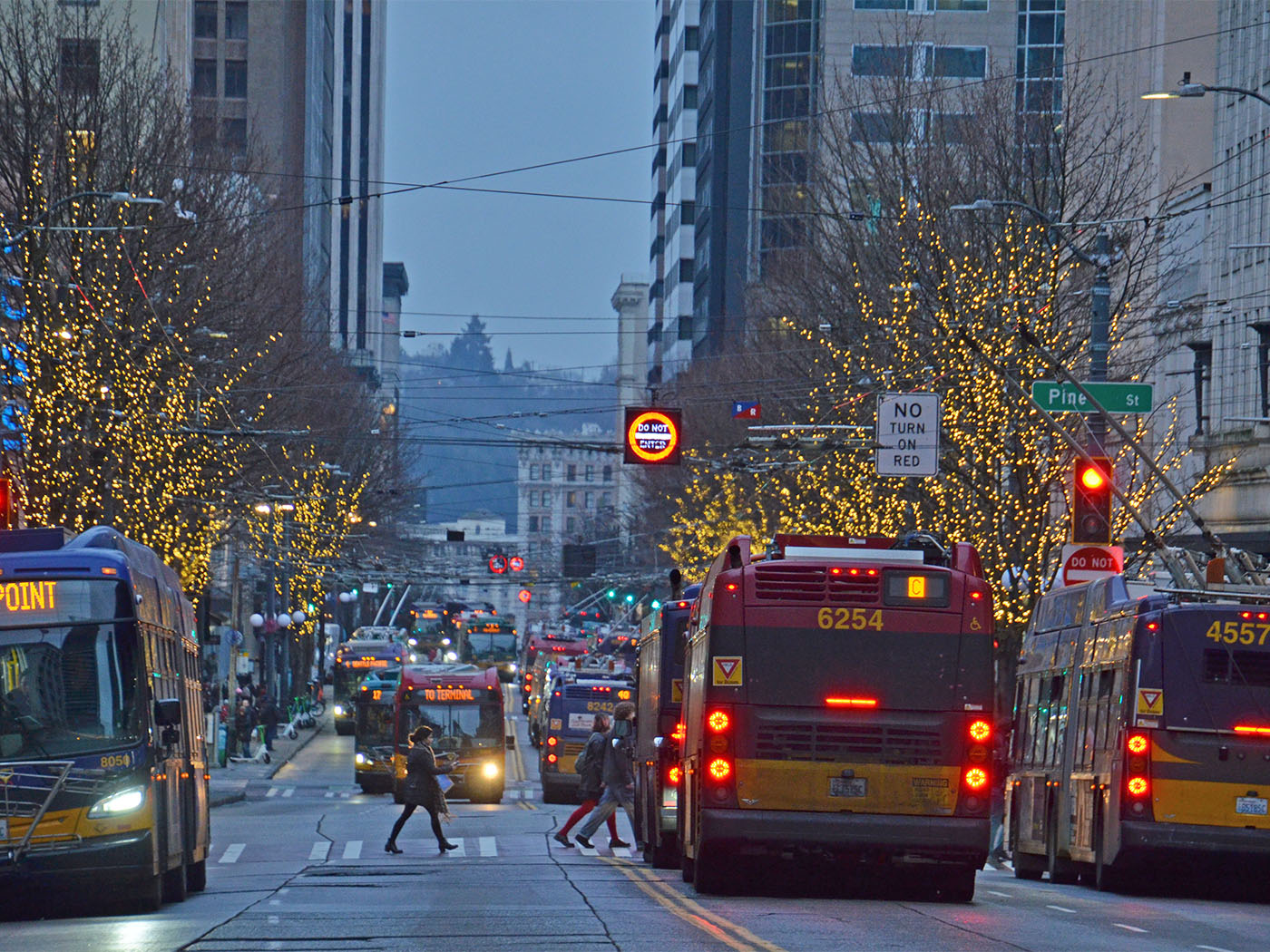News
Commute Seattle’s 2024 Survey: Shifting Travel Patterns Citywide
Posted on

DSA partner Commute Seattle just released its 2024 Seattle Commute Survey report, which found that as more companies shift back to in-office work, both transit travel and drive-alone trips are on the rise.
The survey — conducted in October in partnership with the Seattle Department of Transportation and the University of Washington’s Mobility Innovation Center — garnered responses from more than 75,000 Seattle workers and students. New this year, it also included a question about satisfaction, revealing that people who bike and walk report the highest satisfaction with their commute, and people who drive alone to work reported the lowest satisfaction.
Other key findings:
Shift in work arrangements:
- Citywide, the percentage of people reporting their jobs are fully remote decreased by 8% in 2024 compared to 2022.
- As more people returned to in-person work, transit use increased by 3% for downtown commuters while drive-alone trips increased by 6% since 2022, marking the first time in 10 years that drive-alone commutes have trended upward.
Travel choices and motivation:
- The primary reasons people drive alone are that it is faster, they like the convenience or they have family care obligations.
- The primary reasons people choose not to drive alone are to save money, avoid stress from driving, or they don’t own a car, want to avoid traffic and reduce personal contributions to air pollution from vehicle emissions.
- Transit use was popular across demographics, with the highest usage among people 15-24 years old or people with household incomes below $60,000.
- Driving alone has decreased for all non-commute trips, including grocery shopping, social and leisure, and exercise and fitness outings.
Commute satisfaction and employer incentives:
- People who use active travel, like biking and walking, tend to live closer to their workplace and report the highest satisfaction with their commutes.
- Respondents identified employer-provided incentives, including shuttles and subsidized transit benefits, along with greater flexibility, as effective ways to shift mode choice and improve commute satisfaction.
The 2024 Seattle Commute Survey captures a moment in time, and trends will continue to shift as work arrangements change and new transit options become available, such as additional light rail.
“As more people return to in-person work, they’re rethinking how they get to the places that matter most,” Commute Seattle Executive Director Alex Hudson said. “This is a crucial opportunity for employers and public agencies to invest in sustainable transportation options that meet people’s real needs. Smart choices now can ease commutes and help make Seattle a more livable, connected city.”
Commute Seattle is here to help your company or organization with employee commuting needs. Reach out for more information.